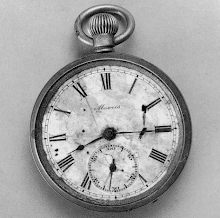skip to main |
skip to sidebar
.jpg) Conspicuous by their absence are Rockwod, Financial Aid & the
Conspicuous by their absence are Rockwod, Financial Aid & the
Public Safety buildings, as well as the Child Development Center
American University is proposing to construct three undergraduate dormitories -- totaling 304,000 square feet -- at the location of the most contaminated areas on this campus, a 90-year-old Formerly Used Defense Site.
"An overarching theme of American University's developing 2011 Campus Plan is to bring more of our undergraduate students back to live on campus. The latest draft of the plan, which was unveiled in May at a monthly meeting with community representatives, focuses on building student housing to meet AU's current and projected needs for the next decade."
2011 Campus Plan Brings More Students Back On Campus
June 21, 2010 AUES looking southwest from roof of McKinley Building (1918)
AUES looking southwest from roof of McKinley Building (1918)
Northwest Current
June 16, 2010 (pg. 1)
 Steam shovel may have buried munitions under C&O Canal
Steam shovel may have buried munitions under C&O Canal
The District of Columbia Department of Health, Environmental Health Administration received information from a resident of Spring Valley consisting of, among other things, a February 25, 1993, memorandum of a phone call from one Ian MacFee to the Mayor’s Office of Constituent Services alleging that the Civilian Conservation Corps (CCC) buried munitions in 14 pits at the AUES [American University Experiment Station]. The caller stated that he worked with the CCC in the 1930s under the command of a Lt. Wray Noel ... There were other intricate details in the telephone call that confirmed facts previously known to the District of Columbia staff (i.e., “French 75s and mustard gas” ) but which are known to only a small circle of experts. These facts recited by the caller suggested a very knowledgeable witness.
.jpg) North of Fletcher's Boathouse, shovel was lowered into
North of Fletcher's Boathouse, shovel was lowered into
then-empty canal from bike path (former railroad line)
The District of Columbia was able to obtain FG-118-120. This photograph dated April 30, 1937, and covers 22 months of Lt. Noel’s 24-month service period ... Indeed, as EPIC [Environmental Photographic Interpretation Center] predicted the photo contains an obvious linear feature approximately a half mile long parallel to the C&O Canal suggesting mechanically worked earth ... This area had railroad access and it would have been possible to bring a steam shovel into the area as MacFee indicated. It was also federal property and close to the AUES. Further, the area upon physical examination still shows clear evidence of earth that has been excavated by mechanical means, compatible with the aerial photograph representation ... The District also obtained another photograph showing the [steam] shovel in the canal, which had been drained. Could it be that the burials occurred in the canal while they were shoveling out flood debris and silt? ... Because EPIC has now analyzed the aerial photographs and found no pits near the canal, it is likely that the burials were made in the canal proper while the crane was there for the purpose of rebuilding the towpath.
Richard D. Albright
The Continuing Search for Burial Sites
Cleanup of Chemical & Explosive Munitions (pgs. 158 - 168)
 Free Hit Counter
Free Hit Counter
.jpg) Conspicuous by their absence are Rockwod, Financial Aid & the
Conspicuous by their absence are Rockwod, Financial Aid & the

.jpg)


